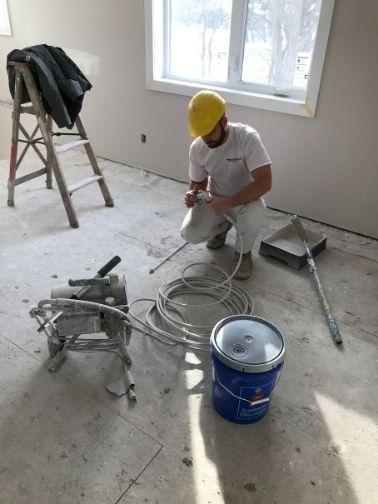25 Aug Do You Need To Sand Baseboards Before Painting?

When people think about painting, they usually envision a new colour on the walls, doors, or kitchen cabinets. But what about the trim that frames everything else in a room?
Paint is not a cure-all for surface imperfections; any chips, bumps, and flakes will shine through once it dries. Baseboards aren’t exactly the smoothest surfaces to begin with; many of them feature grooves, ridges, and precise details. When you add layers of old paint to the mix, you’ll end up with a less than stellar paint job.
Sanding your baseboards before painting them ensures a smooth finish. We’re going to explain why it’s important not to skip this step:
What If You Don’t Sand First?
Is there anything more frustrating than a paint job that turns out poorly? You’ve put in all the time and effort to improve your baseboards, but now you like them less than you did before. It’s not a situation any homeowner wants to find themselves in.
If the paint on the baseboards is in good condition, it may not need extensive prep work. However, sanding the surface helps the paint adhere to it. The new colour won’t last as long if you skip this vital step.
Finally, it’s important to select the right paintbrush. One that’s too wide and thick will skip spots, especially the deeper ridges you often find in trim. Choose a small detail brush to coat all the crevices and ridges in the baseboard.
Preparing Baseboards
When you’re working with an intricate piece of wood, abrasive sandpaper can ruin the details. You need to select a grit that roughens up the surface without removing too much of the material. Many homeowners are tempted to skip sanding for this reason, but it’s a matter of selecting the right abrasion level.
Sanding causes quite a bit of dust to fill the air. It’s important for the quality of your paint job, but it does leave a mess behind. Here’s how you can clean the baseboards after sanding them:
- Vacuum. This step is especially important after you finish sanding. The top edge of the baseboard will collect a lot of dust. Using the small head of the vacuum, remove any sawdust from the trim.
- Wash. How often do you clean your baseboards? During your spring cleaning, the trim usually gets missed. Using soap and warm water, wipe down the trim before you start painting. But depending on the material of your baseboards, you may need to use a cleaning product—avoid cleaning open-pore wood trim with water.
- Protect. Your baseboards are located directly beside your floors and walls. If you don’t protect other surfaces, you’ll end up with paint where you don’t want it. Apply painter’s tape past the edges of the baseboards. To keep your floors safe, lay down a drop cloth or an old bedsheet.
Watch Out For Lead Paint
When was your home built? If it’s older than 1990, the baseboards may be coated with lead paint. Sanding them can release toxic particles into the air. To determine if your baseboards have lead paint, you can contact a professional painting company to obtain a sample of them.
At the end of this post, you might feel overwhelmed at the idea of painting baseboards by yourself. What seemed like a simple task requires a fair bit of prep work and expertise to get right.
At Pinnacle Painting, we offer house painting in Winnipeg. We’re happy to help homeowners transform interior and exterior spaces. Contact us today to book an estimate.
